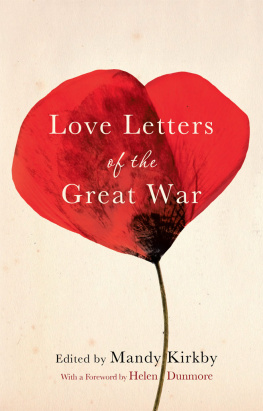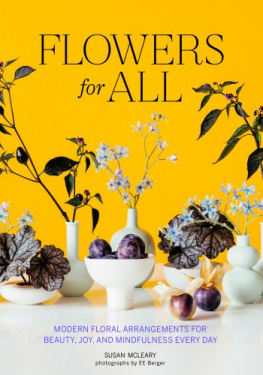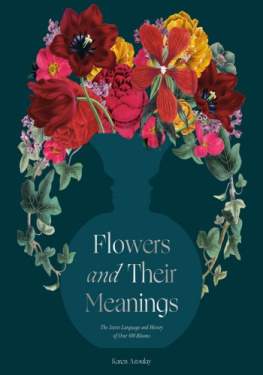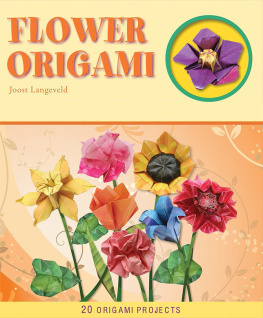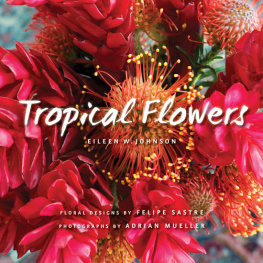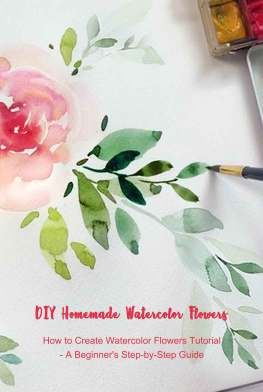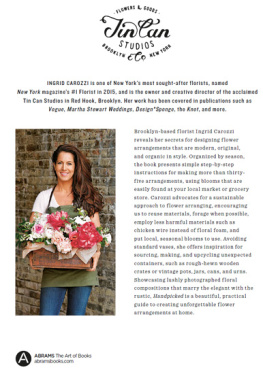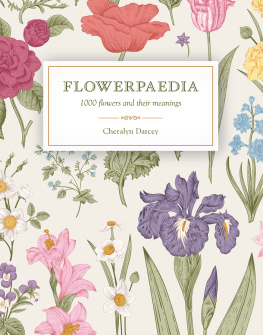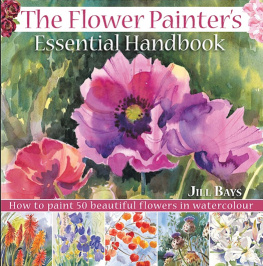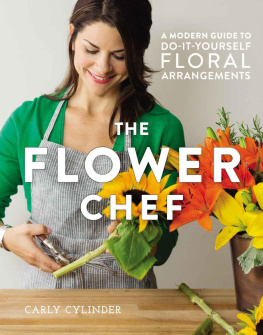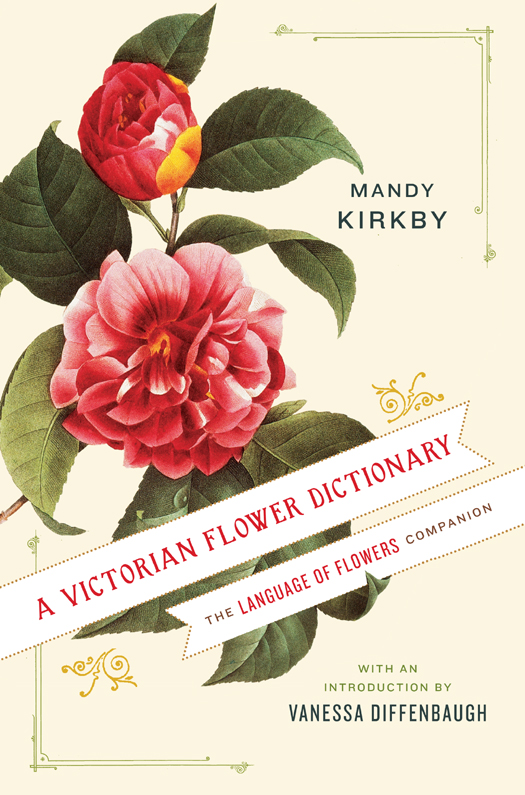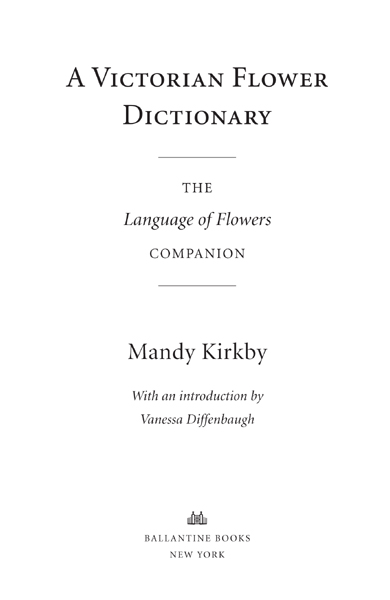Copyright 2011 by Mandy Kirkby
Foreword 2011 by Vanessa Diffenbaugh
All rights reserved.
Published in the United States by Ballantine Books,
an imprint of The Random House Publishing Group,
a division of Random House, Inc., New York.
B ALLANTINE and colophon are registered
trademarks of Random House, Inc.
Originally published in the United Kingdom by Macmillan,
an imprint of Pan Macmillan, a division of
Macmillan Publishers Limited, London.
eISBN: 978-0-345-53287-9
www.ballantinebooks.com
FIRST U.S. EDITION
Designed by seagulls.net
v3.1
C ONTENTS
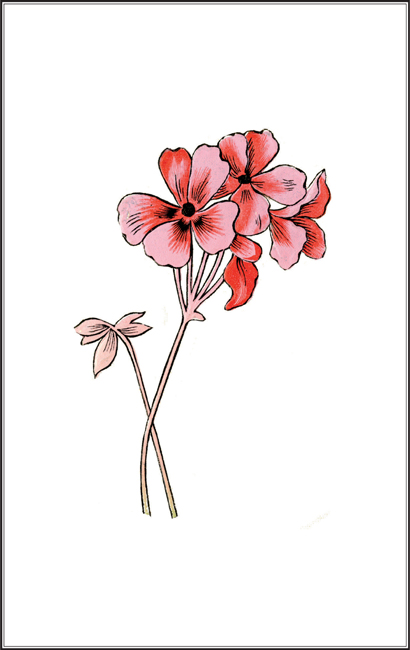
F OREWORD
Flowers do speak a language,
clear and intelligible. Observe them, reader,
love them, linger over them and ask your own heart
if they do not speak affection, benevolence and piety.
In every culture and throughout time, flowers have been central to the human experience. Whether growing wild or in carefully tended gardens, blooming in works of art or written into the pages of great literature, flowers have always surrounded and supported us. They appear in our most significant rituals and traditions all around the globe: from east to west; from ancient civilization to the present day; when we hope or pray, love or mourn; we do it with flowers in our hands.
But why do flowers play such a significant role in our lives? What mystery do they represent and reveal? And how does our deep connection to flowers show itself? In every season and in every country, the answers to these questions are different.
In the Indian state of Uttarakhand, where the Ganga River drops out of the Himalayas and into the valley, a ceremony takes place every evening at sunset. While prayers buzz through a crackling PA system, pilgrims to the holy site of Har Ki Pauri (Steps of the Lord) fill banana-leaf boats with flowers roses, orchids, tulsi and marigolds then place a lit candle among the petals and float the fragrant bundle down the river with a hope, a prayer or a wish.
Across the globe from the Ganga River, in Mexico and through-out Latin America, cempasuchil bright orange marigolds grow. Cempasuchil, the flower the Aztecs used to remember the deceased, is cultivated in preparation for Dia de los Muertos (Day of the Dead). Families plant seeds and tend their gardens, thinking of the loved ones they have lost as they watch the marigolds sprout, grow and finally blossom. The brilliant orange flowers are believed to help guide the souls of loved ones home, and for a single day the Mexican people find comfort in having the spirits of their loved ones with them once again.
Every spring in Japan, citizens listen to the weather bureau forecast the Sakura Zensen (the cherry blossom front). At the height of the blossom, Hanami (flower viewing) festivals take place all across the country, with friends and family gathering for tea or lunch under the pink canopies. Festivities often go well into the night, with music and paper lanterns illuminating the trees. While the celebrations are joyful, they are brief: cherry trees are in full bloom for two weeks at the most. The perfect, delicate flowers have come to represent the essence of life itself shockingly beautiful and heartbreakingly fleeting.
In France on May Day, there is a similar focus on a single flower: lily of the valley. This delicate white flower, which grows as a row of bell-shaped blossoms nestled in long green leaves, is often referred to as porte-bonheur literally, bringer of happiness. Every street corner overflows with the flower: florists have huge outdoor displays of the plant; people come in from the countryside to sell plants theyve grown in their garden or harvested in the woods. Makeshift stands support heaps of flowers in bundles held together with a ribbon. The lily of the valley is so profuse that even the Metro has a tinge of springtime sweetness, as commuters clutch fragrant bouquets of the delicate white flowers.
And then, of course, there are the wedding ceremonies: from England to the United States and beyond, flowers play a part in every aspect of this important tradition, from the bridal bouquet to the centrepieces. At many weddings a flower girl precedes the bride, clutching a basket of rose petals and scattering them down the aisle. The petals she drops are meant to create a path of love and beauty that will carry the bride into her new life as a married woman.
In Asia, the Americas, Japan and Europe, these traditions have remained constant for hundreds of years. It is astonishing to realize that while everything else around us has changed housing, transportation, technology, methods and styles of communication flowers and their traditions have remained the same. We grow them, we study them and we give them to guests, to hosts, to loved ones, in times of joy and sorrow, awe and appreciation. While both the traditions and the significance of the flowers vary from region to region, always there are flowers, and always there is the desire to communicate.
But what is it that we are trying to say, and why do we use flowers to try to say it? What is it about the flower itself that we are drawn to? Is it the simple expression of the cycle of life we so admire: from seed to sapling, to bud to blossom, and back to seed? Is it the courage of the first snowdrop, braving the last days of winter to push through the frozen ground? Or is it the sweet fragrance of the rose a scent that physically changes our brain chemistry, bringing a rush of warmth and joy?
It is these questions that have spawned symbolic flower languages in almost every culture since ancient times. From the nature worship of early religions to Greek and Roman mythology, humans have assigned floral symbols to Gods and deities, prophets and saints. In the Christian faith the Virgin Mary is forever associated with the white lily, from the story of the Apostles opening her casket and finding only roses and lilies; in the Hindu religion, deities eyes are often represented as flower blossoms, looking out with compassion and wisdom; the Buddha is frequently depicted sitting on an open lotus blossom, the symbol of full enlightenment.
The Victorian era was the great age of the flower garden and of all things horticultural, and so it is not surprising that flower symbolism became particularly elaborate at this time. At the heart of the Victorians love of flowers was their strong and direct connection with nature, much more so and in quite a different way than our connection today. The majority of the population still lived on the land, nature itself was much more abundant and fruitful, and the notion that God spoke to man through the natural world, conveying messages, particularly moral ones, was an intrinsic part of everyday thinking. Increased trade and travel brought a wealth of new and exotic species from the East and the Americas, which were cultivated in hothouses and delighted over.
The origin of the western language of flowers, an intricate system of floral symbolism in which each flower is assigned a specific meaning, is thought to have been inspired by the Turkish custom of slam a method of communicating through flowers and other objects. In the Turkish tradition, the objects did not carry a symbolic meaning; rather, the recipient would decode the message based on guessing words that rhymed with the object.


